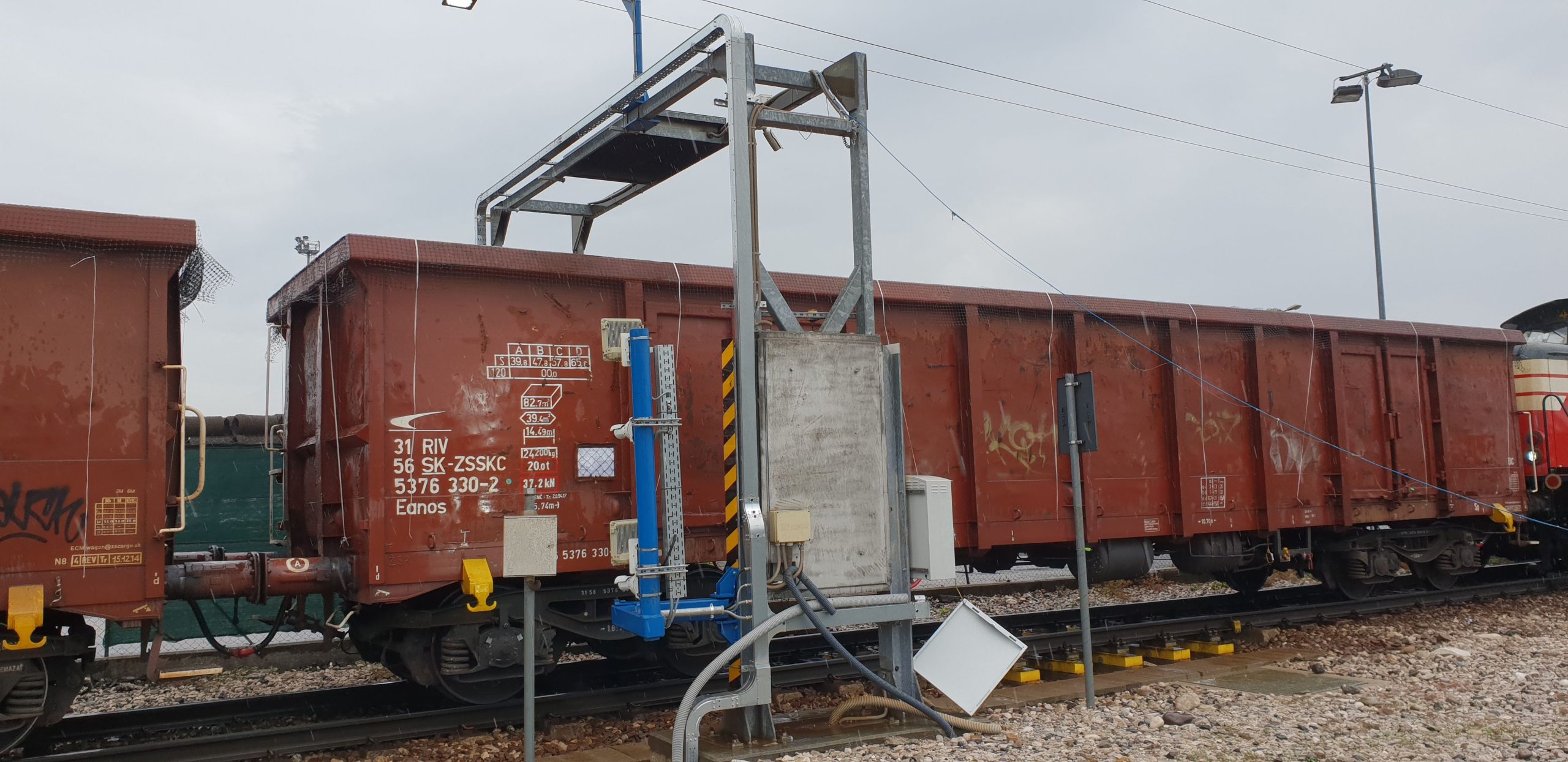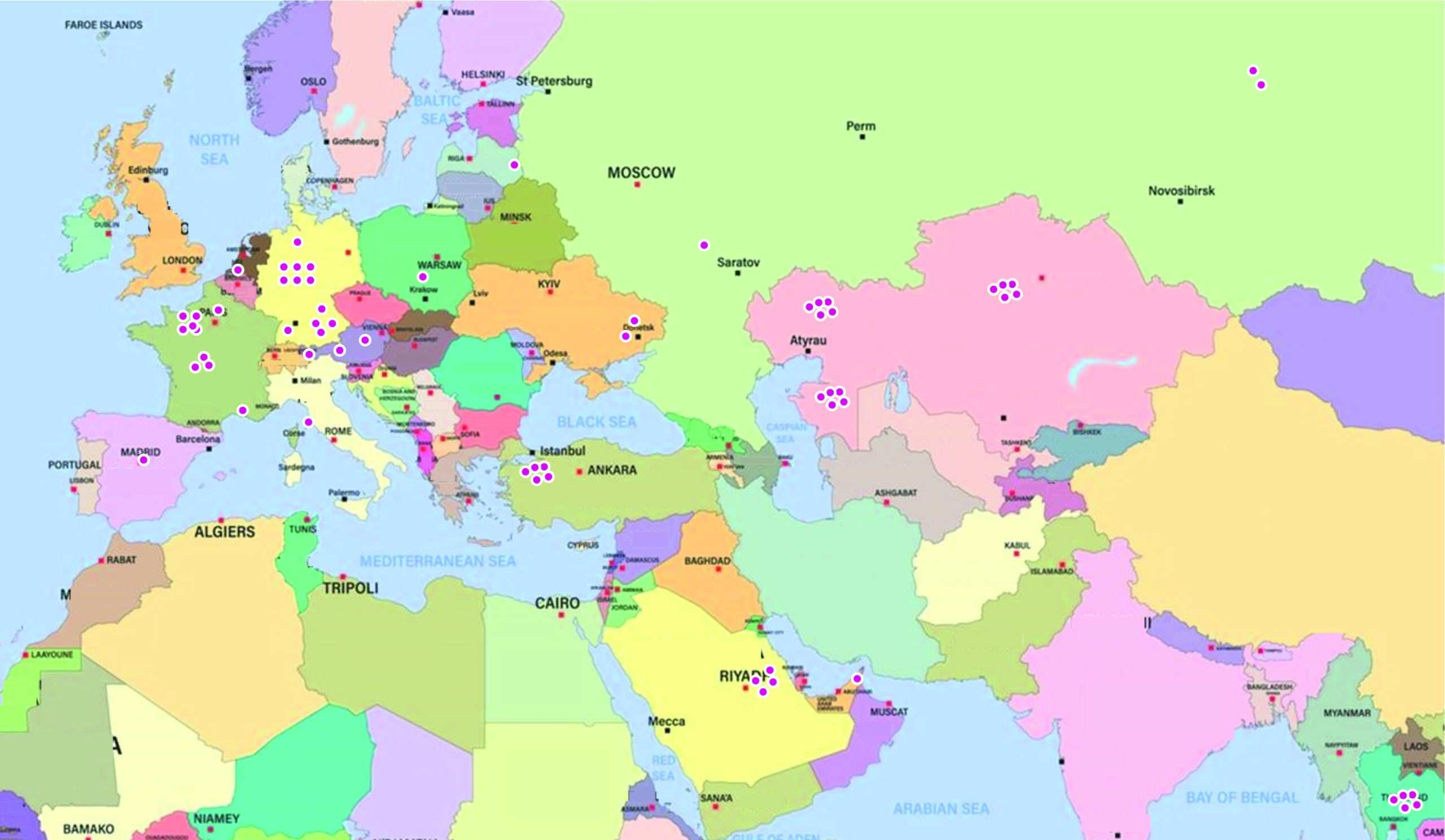Control points for freight trains 16/08/23
< Zurück
Control points are structures that detect the passing of freight trains, recognising data from the wagons, and checking different kinds of states and damages. Himmelsbach GmbH is a German company that specialises in these types of technologies for 25 years and operates more than 200 checkpoints on railway lines worldwide. RailFreight.com had a chat with the company’s General Manager Michael Himmelsbach to understand how these control points work and what they bring to the industry.
Control points work through sets of sensors such as cameras, lidars, lasers, and radars and can record both 2D and 3D video of both sides of the convoys. “Some even can check left, right, top, and bottom”, Himmelsbach added, which allows for a full scan of the trains. Other than possible damages, control points also recognise and record identification numbers of wagons (UIC number), UN numbers for dangerous goods, and hazardous icons. In addition, control points are also useful to check for irregularities in the composition of the convoy. Himmelsbach highlighted that the rule that is most commonly broken is “not complying with the clearance profile which can cause damages to the infrastructure”.
‘Same principles but differences for wagon types’
“The principles of detection and recognition are universal”, said Himmelsbach. When damage is detected, “An alarm message is sent to the operator with pictures of the damage and a link to the video. However, there are some differences when it comes to various types of freight wagons”. For the steel industry, for instance, the wagons passing through the control points are open on the top. In this case, thus, they are useful to detect the cargo and recognise the type of scrap thanks to Artificial Intelligence (AI).
 Image: © Himmelsbach GmbH
Image: © Himmelsbach GmbH
For refineries, on the other hand, control points are used to monitor the state of the domes of tank containers passing through. “Open domes would cause alarms in this case”, Himmelsbach specified. Recognition of Graffiti generates a ticket for the cleaning service which calculates the size of the covered surface on the identified wagon.
 Image: © Himmelsbach GmbH
Image: © Himmelsbach GmbH
Advantages of control points
As Himmelsbach explained, control points can be found all along the railways. Moreover, he underlined, they are quite common at the entrance of larger industrial facilities such as refineries, steel mills, chemical plants, and port terminals. One of the main advantages of control points is that they constantly work, day and night. If an alarm is triggered, the operator is notified immediately and the video and protocols are saved in a database.
Despite all the advantages brought by control points, there are a few aspects that can still be further improved. “The automatic video analysis is working for a speed of up to 120 km/h”, Himmelsbach stated. In a future that sees high-speed rail developing also for freight, the structures might need to be adapted to work at higher speeds as well. Moreover, higher-resolution 2D/3D pictures would provide a much more detailed view of the passing trains. Finally, some benefits could come from a more intensive implementation of AI.
 Himmelsbach GmbH operates more than 200 checkpoints on railway lines worldwide. Image: © Himmelsbach GmbH
Himmelsbach GmbH operates more than 200 checkpoints on railway lines worldwide. Image: © Himmelsbach GmbH





